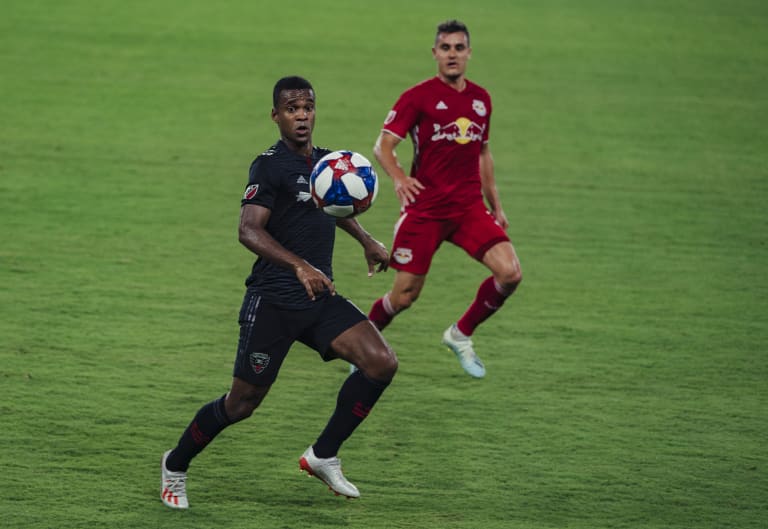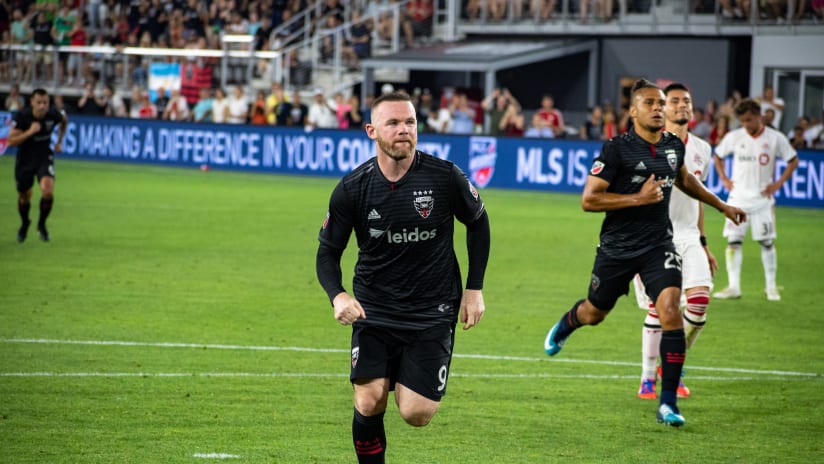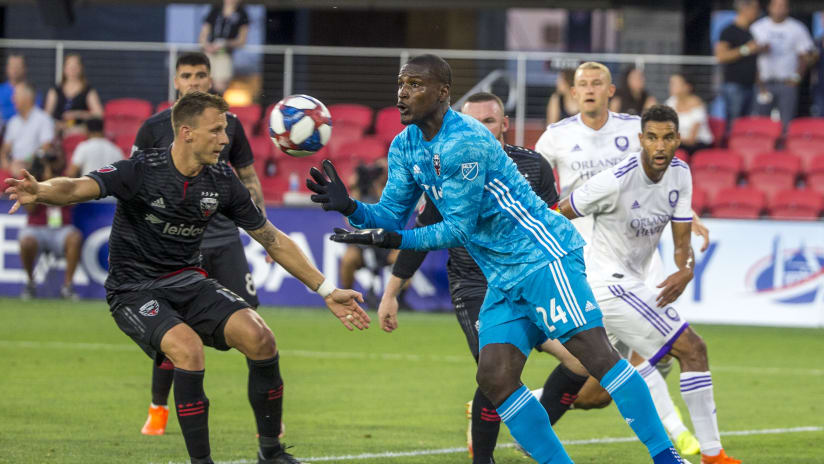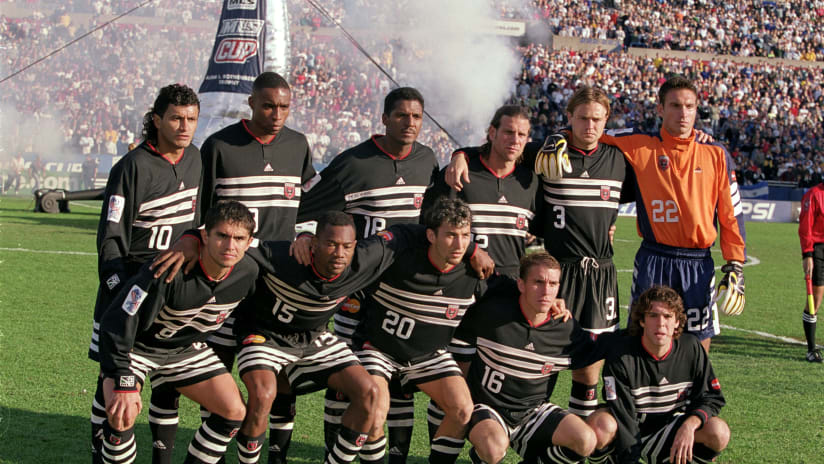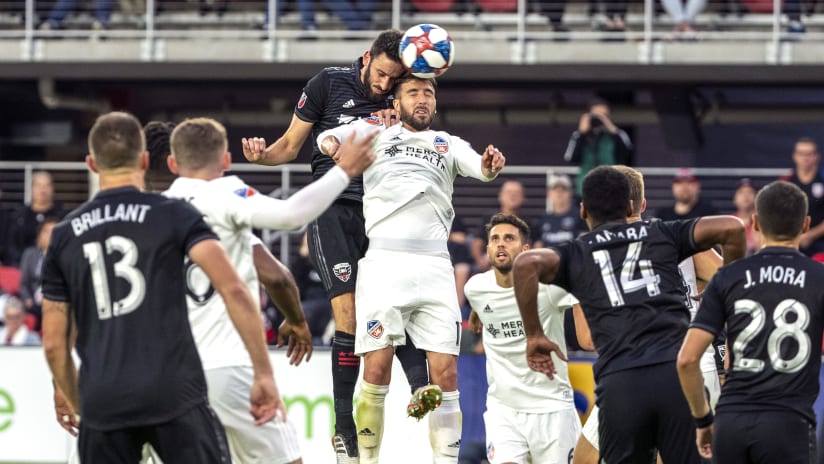By the time the playoffs arrived, D.C. United head coach Ben Olsen had grown tired of answering questions about his team’s middling offensive output during the second half of the season. United had entered the postseason unbeaten in five games and posted a shutout in each of them to tie a league record and that, according to Olsen, was more deserving of attention than any potential shortcomings.
“I’m not going to get caught up in the (fact that) the offensive end is sputtering,” Olsen said leading up to a first-round matchup with Toronto FC. “We’ve been able to score goals and still create enough chances in each game to win and still be a solid defensive team. Hopefully that can continue, and I think if that does, it’s a good recipe to have success in the postseason.”
Bothersome though the offensive inquests might have been, Olsen surely understood the validity of the questions. Goals had become harder and harder to come by as the weeks and months progressed.
From the beginning of the season through May 9, United ranked tied for ninth in goals scored with 17. By July 3, the club still ranked in the top half of the league in that category. But from July 20 through the end of the regular season — a stretch in which the Black-and-Red posted more losses than wins — Olsen’s side scored the second-fewest goals in Major League Soccer with only FC Cincinnati behind them. A year removed from scoring 62 goals in 2018, buoyed by the summer arrival of striker Wayne Rooney, United netted just 42 this past season.
So with the 2019 campaign in the rearview mirror following a 5-1 defeat to Toronto, it’s time to reflect on this year’s roster before general manager Dave Kasper unveils a new one during the winter months. This is the first in a series of stories analyzing the Black-and-Red position by position.
First up, the strikers.
Wayne Rooney
Though he was unable to secure a trophy during his year and a half with the club, Rooney remained the team’s talisman in 2019, leading United in both goals (11) and assists (8). He appeared in 28 games and made 27 starts while averaging 85.9 minutes per start during the regular season. He led the Black-and-Red in chances created with 76 — winger Paul Arriola was next with 43 — and also led the team in both shots on target (30) and shots off target (37). Interestingly, Rooney’s average shot distance increased significantly during his second season in the league. A year ago, Rooney’s shots originated from an average distance of 21.4 yards; this year that number jumped to 24.7 yards. Rooney’s offensive production dovetailed with the team’s cooling period during the second half of the year. He scored 8 of his 11 goals by May 25 and recorded 5 of his 8 assists by May 29. He also missed five of the last 12 regular season games due to a combination of illness, injury and suspension. Nonetheless, he remained United’s most potent player in the final third until the moment he exited the lineup for the final time against Toronto. His exquisite service on free kicks became a focal point of the offense as goals from open play proved elusive down the stretch. And as a captain, where Rooney brought experience from two decades of football at the highest level, his leadership could never be questioned.
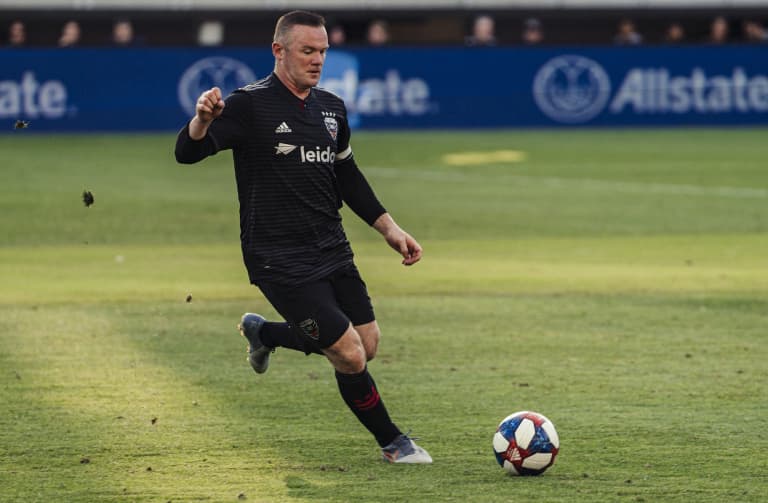
Quincy Amarikwa
With Rooney entrenched in the starting lineup, Amarikwa played the role of scheduled substitute, a frequent introduction by Olsen during the second half of games throughout the season. Amarikwa, who signed with United as a free agent in March, made 23 appearances during the regular season — his most since spending 2016 with the San Jose Earthquakes — and started three games when Rooney was out of the lineup. He contributed only 1 goal and 1 assist on the year but both were of extreme importance: The former earned United a tie against the New England Revolution at Audi Field; the latter sparked one of the team’s finest victories of the year against the LA Galaxy. Taking away Amarikwa’s three starts, he logged 207 minutes over 20 appearances for an average of 10.35 minutes per game. It’s difficult for any player to impact matches with consistency in such short periods of time, aside from bringing raw energy and fresh legs, and eight of his appearances lasted five minutes or fewer for the briefest of cameos. The offshoot of such thin playing time was a rather modest offensive output. Amarikwa averaged only one shot every 31.8 minutes this season and tied for sixth on the team in big chances created per 90 minutes. His total of 0.87 shots on target per 90 minutes was less than half the total posted by teammate Ola Kamara and he led United in shots off target with 1.52 per 90 minutes. Still, Amarikwa brought a necessary level of tenaciousness to both training sessions and games alike, sometimes dragging his teammates across the finish by bolstering their resolve. He expertly played the role of pest by always challenging for the ball (24.35 duels per 90 minutes to lead the team) and willfully talking trash with opponents. His sheer intensity endeared him to many fans of the Black-and-Red this season.
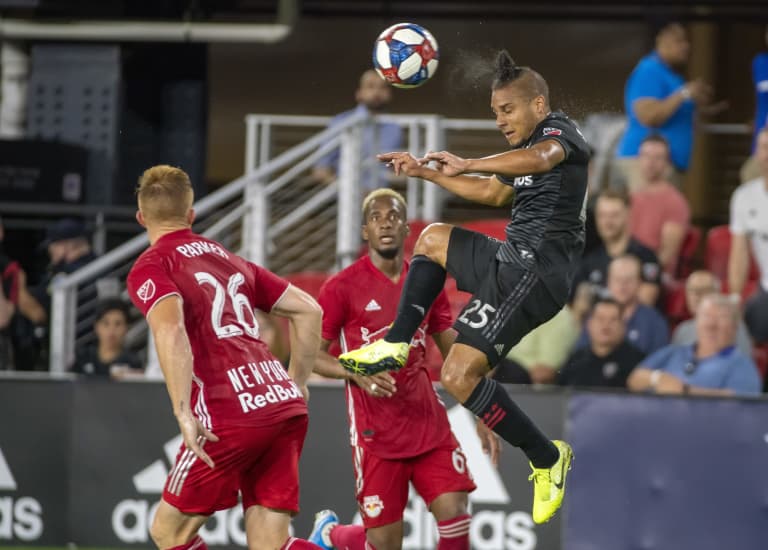
Ola Kamara
Kamara arrived at Audi Field with the second-biggest transfer fee in club history after Kasper finalized a $2.5 million deal with Shenzhen F.C. in early August. He joined United following just five appearances in the Chinese Super League and one appearance in the Chinese FA Cup as frustrations mounted over a failed move to Asia. Olsen eased Kamara onto the field with a 16-minute cameo as a substitute against the Vancouver Whitecaps on Aug. 17 but quickly added him to the starting lineup a few days later. Kamara scored three goals in his first three starts for the club and finished the season with one goal every 85.7 minutes, far beyond his already stellar career average of one goal every 154.4 minutes for the LA Galaxy and Columbus Crew, which equates to better than one goal every two games. In training and in games, Kamara flashed some of the clinical finishing this United side will need in the post-Rooney era. That Kamara’s three goals came with an expected goal (xG) total of just 1.1 demonstrated his unique ability to perform well above the norm for an MLS attacker. In fact, his +1.9 goals above xG ranked second on the team behind only Lucas Rodriguez, who finished the season at +2.2 in that same category. Kamara also gave United an aerial presence at the No. 9 position. His extrapolated total of 10.27 aerials per 90 minutes led the team and he ranked second in duels per 90 minutes with 15.95, albeit in a fairly small sample size of 257 minutes during the regular season. A hamstring injury slowed his momentum in September and sidelined him for three consecutive matches. He returned for substitute appearances in the regular season finale and the playoffs, though he did not score another goal. Kamara, who turned 30 earlier this month, is expected to inherit the talisman role from Rooney next season.
